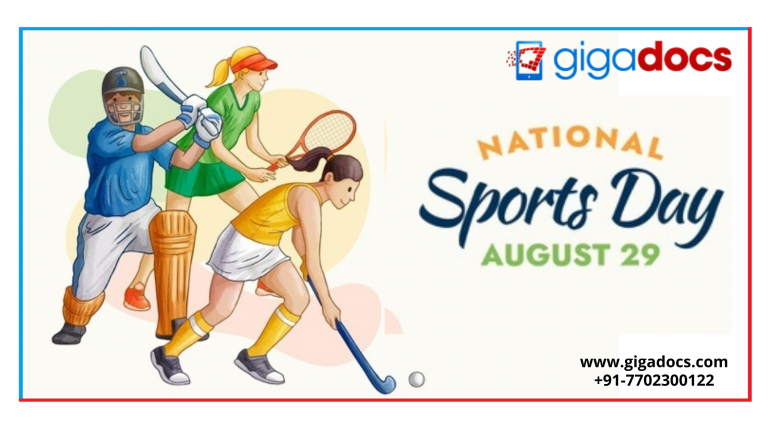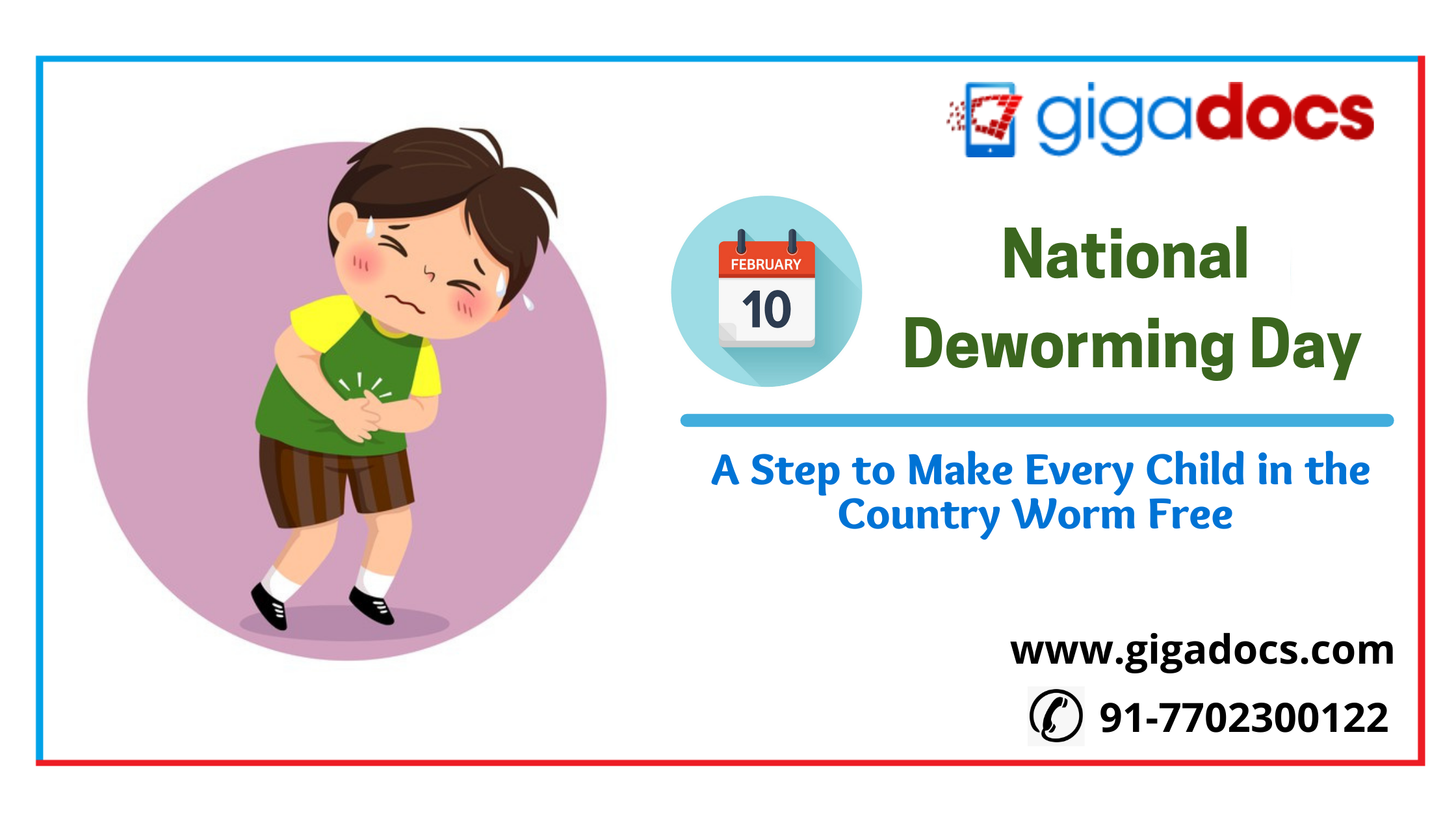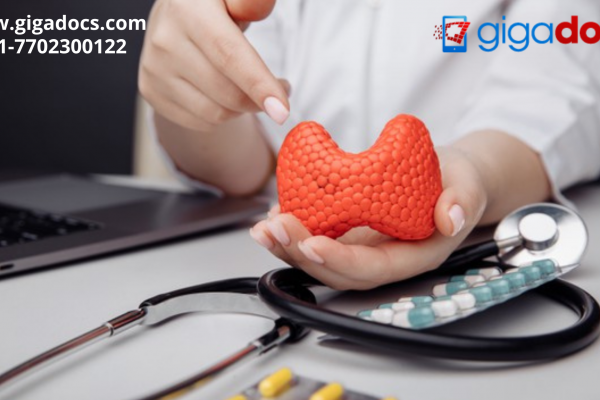Sport has been around for a very long time. It has helped civilizations stay fit and healthy while also strengthening communities and raising morale. Sport is vital in many aspects of life, from promoting health and happiness to transforming education and society. Individuals and communities will prosper when sports act as a bridge, inspiring young athletes to encourage healthy competition. On this National Sports Day, we’re sharing a comprehensive guide with you that explains the benefits and importance of sports and the various kinds of sports injuries and how to treat them.
Sports and its Health Benefits
The fantastic health benefits of sports are among the best reasons for kids and adults to participate in sports. Experts suggest 150 minutes of physical activity per week, but because the sport involves rigorous training, you need to strive just for 75 minutes each week to reap the same advantages.
Regular exercise is well-known for its health benefits, but do you realize how exercise might benefit you? Take a look at this:
- Improves cardiovascular health- Running, cycling, and swimming are examples of aerobic exercises that can enhance your body’s ability to transfer and utilize oxygen in the lungs and blood. Thus, regular exercise can help to improve your cardiac system’s overall health.
- Reduces the likelihood of heart disease, stroke, and diabetes- The risk of cardiovascular diseases, stroke, and diabetes considerably lessens with a healthier heart.
- Lowers blood pressure – Physical activity helps prevent hypertension by keeping your heart and blood vessels strong.
- Promotes joint flexibility and range of motion- Sports improves flexibility and reduces the injury risk.
- Stress reduction- Exercise is an excellent technique of stress management and is a fabulous mood enhancer.
- Reduces the cancer risk- Physical activity reduces bladder, breast, colon (proximal and distal) malignancies, esophagus, kidney, lung, and stomach cancer risk.
- Sports help to maintain a healthy cholesterol level- Sports induces LDL (bad cholesterol) levels to fall and HDL (good cholesterol) levels to rise.
- Reduce the chance of falling- Physical exercise programs that involve aerobic, muscle strengthening, balancing physical activities, weight-bearing activities such as jogging, brisk walking, jumping jacks, and strength training exert a force on the bones, which reduces the chance of falling. These exercises can help with bone growth and strength and reduce the risk of falls and fractures.
- Defend against osteoporosis, arthritis, and other rheumatic diseases- Moderately vigorous aerobic, muscle-strengthening, and bone-strengthening physical activity can help decrease the loss of bone density that occurs as people age.
- Type 2 diabetes- The symptoms of metabolic syndrome are heavy body fat around the waistline, hypertension, low HDL cholesterol, high triglycerides, and/or high blood sugar. This situation can be avoided by regular physical activity. Just 150 minutes of moderate physical activity is good to gain benefits. Increased physical activity further appears to lessen risk.
- Improved sleep quality- We all know how important sleep is, and exercise can help you get the most out of it.
- Benefits to mental health- Exercise is also beneficial to your mental health, as it may help you cope with anxiety and sadness, increase your focus, and boost your self-esteem.
- Life expectancy- What do you get when you combine all of these advantages- A healthier life that is longer and more pleasant!
Choose a Sport you Like
The wide variety of sports offers means everybody can find a fun type of exercise. This, once again, makes exercise more enjoyable and less of a burden, boosting the likelihood that you will find the drive to do it. Regular physical activity involves:
- Diabetes risk is reduced by half.
- Heart disease risk is reduced by 35%.
- Colon cancer risk is reduced by 50%.
- Breast cancer risk is reduced by 20%.
- As an older adult, you have a 30% lower risk of falling.
- Death risk is reduced by 30%.
These figures apply to only a small amount of exercise. One sports activity each week would suffice to reap these benefits. At the same time, your body fat percentage will decrease, and your muscle mass will increase.
Benefits of Sports
Sports are well-known for their physical benefits, but you may not know how they affect your mental health. Physical activity has a positive impact on your mood. This increase in happiness stems from a variety of neurological and psychological factors.
- Neurological Benefits- Sport releases dopamine and serotonin, which induce physical changes in the brain. As a result, your chances of developing depression are lowered by up to 30%! Besides, because sports are generally played outside, you’ll get more vitamin D.
- Psychological Benefits- When you participate in sports, you work on more than just your depression. Your anxiety levels are likely to be reduced as a result of releasing tension and enhancing mental energy. Much of this stems from the sensation of being completely focused on the activity at hand.
- Improved Social Skills- Sport, unlike other exercises, necessitates social interaction. Even if you’re playing a single sport, you’ll have to communicate with an opponent, coach, and referee. Team sports are very beneficial for developing social skills. Team games are among the most effective strategies for improving interpersonal skills. Sporting activities necessitate a higher level of communication. Listening skills and the ability to understand body language are required to understand the rival. This is a valuable skill in everyday life which is best learned on the sports field.
- Problem-Solving skills- Fighting for a common objective with a team of players and coaches teach you how to operate as a team and communicate efficiently to solve challenges. This knowledge comes in handy while dealing with difficulties at work or home.
- Weight Management- Are you trying to reach or maintain a healthy weight? Both food and physical activity are essential to maintain healthy body weight, lose excess body weight, or sustain successful weight loss. Work your way up to 150 minutes of moderate-intensity aerobic activity per week (for example, 30 minutes a day, five days a week). Physical activity, according to scientific research, can help you maintain your weight in the long run.
| National Sports Day On August 29, National Sports Day is observed to honor the birth anniversary of hockey hero Major Dhyan Chand. This day is commemorated to raise awareness about the value of sports and daily activities in everyone’s life, emphasizing the importance of being fit and healthy. On this day, the President of India bestows major honors on prominent sports figures, such as the Khel Ratna, Arjuna Awards, Dronacharya Awards, and Dhyan Chand Awards. |
Addressing Sports Injuries
Sports injuries happen when people participate in extreme sports or exercise. Overtraining, a lack of conditioning, and poor form or technique can all lead to sports injuries. Warming up properly reduces the chance of sports injuries. Sports injuries can cause bruises, strains, sprains, rips, and fractured bones. Muscles, ligaments, tendons are among the soft tissues that might be impacted the most.
Different Types of Sports Injuries
Pulled Muscle
The most frequent sports injury is a muscular strain, sometimes known as a pulled muscle. It happens when a muscle is overstretched and tears. Pain, swelling, weakness, and difficulty or inability to use the muscle are signs of a torn muscle.
Pulled muscles are most common in the quadriceps, calves, hamstrings, groin, low back, and shoulder. RICE stands for Rest, Ice, Compression, and Elevation and is helpful to treat minor muscular strains. NSAIDs (nonsteroidal anti-inflammatory medicines) can also aid with pain and swelling. More serious muscle strains should be evaluated and treated by a doctor.
Torn ACL
The anterior cruciate ligament (ACL) helps to stabilize and retain the knee joint together. A torn ACL is a sports injury that can happen when you land on your feet the incorrect way, change directions or stop fast, or take a direct hit to the knee. When a person’s ACL is torn, they may hear a pop and subsequently notice that their knee is no longer functional. A torn ACL causes pain, edema, and a loss of range of motion. Eventually, it can make walking challenging.
A ruptured ACL must be medically repaired, typically with a graft from another ligament in the patient’s body. After surgery, extensive rehabilitation is required to restore the strength and function of the knee joint. Some patients may choose not to have surgery based on their age, health status, and desired degree of activity. Braces and physical therapy will not heal the issue in this scenario, although they may bring some alleviation.
Torn MCL
The medial collateral ligament (MCL) connects the femur (upper leg bone) to the tibia (lower leg bone) (tibia). It can be found on the inside of the knee. The MCL is often injured when the knee joint is pulled sideways when the knee is struck directly. Pain, edema, and joint instability are all symptoms of a torn MCL. Ice, bracing, and physical therapy help to treat the illness. Surgery may be necessary if other components in the knee are affected or if the torn MCL is serious.
Shin Splints
Shin splints cause discomfort on the insides of the lower leg that is throbbing, agonizing, or stabbing. Shin splints are a type of repetitive motion injury that can affect runners and those who are just starting to exercise. Inflammation of the muscles and tendons surrounding the tibia causes pain. Shin splints can be relieved by stretching, resting, and using ice. NSAIDs (nonsteroidal anti-inflammatory medicines) can help with pain and swelling which can be reduced by bandaging the affected area. Shin splints are more likely in people who have flat feet. Shin splints can be prevented with the use of correct athletic footwear.
Stress Fracture
A stress fracture is an acute injury that happens when the muscles can no longer withstand the impact of physical activity, and the pressure is absorbed by a bone, resulting in a break. Increased activity, especially too soon, can lead to stress fractures. Stress fractures are more common in women than in males and the lower legs and feet. They generate pain when you move and require rest to heal.
Plantar Fasciitis
The plantar fascia is a ligament that supports the arch by connecting the heel to the front of the foot. Inflammation of the plantar fascia is known as plantar fasciitis. It produces the heel pain, which is caused by stress and strain on the feet. Obesity, tight calf muscles, repeated use, high arches, and new sports activities are risk factors. Rest, ice, nonsteroidal anti-inflammatory medicines (NSAIDs), and stretching are helpful to treat plantar fasciitis.
Sprained Ankle
A sprained ankle occurs when the ligaments that anchor the joint get overstretched. Ankle sprains can happen while playing sports or going about your daily routine and can be caused by twisting the ankle by accidentally stepping on an uneven surface or stepping in a way that twists or rolls the foot. Sprains and pain can be slight to severe, treated with RICE (rest, ice, compression, and elevation). Besides, nonsteroidal anti-inflammatory medications (NSAIDs) reduce pain and swelling.
Tennis Elbow
Tennis elbow is a common overuse condition that is linked to racket sports. Plumbers, painters are the professions that are also at risk. Tennis elbow is a condition in which small tears in the tendons on the outside of the elbow create inflammation. Tennis elbow is a painful condition linked to a shaky grip that can be relieved with rest and nonsteroidal anti-inflammatory drugs. Wearing a customized forearm brace can help relieve pressure on the uncomfortable spot. Physical treatment could be beneficial. Injections of steroids can help to reduce inflammation.
Low Back Pain
Several factors can cause low back discomfort. Overplaying too many rounds of golf or lifting heavy weights can cause back pain. Without therapy, this type of back pain usually goes away on its own. Rest and anti-inflammatory drugs can help you feel better. Protecting the back can be as simple as exercising with appropriate form and gradually increasing the duration of sessions. It may be essential to change exercise techniques or perform daily activities differently in some circumstances. Other types of back pain can be more serious, necessitating medical and/or surgical treatment.
Concussion
A concussion is a traumatic brain injury (TBI) that occurs when the brain undergoes rapid acceleration inside the skull. A direct hit to the head or body may cause a concussion. People who engage in contact sports like football are at increased risk for concussions. The symptoms often include headache, loss of consciousness, memory loss, sleepiness, nausea, vomiting, and more. A thorough neurological exam is necessary after a concussion to determine the extent of the injury. Healing from a concussion requires rest, both physical and mental, to allow the brain to recover. People who suffer concussions must receive a doctor’s clearance before resuming sports, especially young people whose brains are more vulnerable.
Achilles Tendonitis
Inflammation of the Achilles tendon causes pain in the lower back of the leg, directly above the heel. It’s possible that the area will become uncomfortable, bloated, and rigid. Physical activity makes the ache worse. The tendon may thicken, and bone spurs may form in the area in some instances. Rest, ice, stretching, and nonsteroidal anti-inflammatory medicines can all help with Achilles tendinitis. Physical therapist-recommended strengthening activities may be beneficial. The strain on the damaged heel might be relieved with special footwear and orthotics.
Runner’s Knee
Patellofemoral pain syndrome, often known as runner’s knee, is a painful ailment that develops when the tendons, joint lining (synovia), and/or other knee soft tissues get strained. A runner’s knee can develop as a result of overuse. A misplaced kneecap can also cause problems. The runner’s knee can cause popping and crack in addition to pain. Switching to activities that are less taxing on the knees may help to alleviate difficulties. Rest, ice, compression, and elevation (RICE) may be beneficial. Physical therapy, orthotics, and nonsteroidal anti-inflammatory medications (NSAIDs) may help. Surgery is a last resort for severe patients that have failed to respond to conventional treatments.
Sports Injury Prevention and Management with Gigadocs
Physical activity is an essential component of overall wellness. Certain precautions, however, should be taken to reduce the risk of sports injuries. Sports injuries can be avoided by using the proper equipment and maintaining it. Wearing the correct safety equipment can help protect the body from damage. Resting in between workouts allows the body to recover and rebuild itself. Muscles, bones, and other tissues can adapt to more challenging exercises by beginning gently and gradually developing strength, flexibility, and endurance. This reduces the risk of damage. Finally, listening to your body might help you avoid sports injuries.
Reach out to Gigadocs, your fitness manager, for healthcare tips, knowledgeable articles, digital storage of prescriptions, and healthcare records. Book your consultation to discuss your health with the best orthopedists, spine injury specialists, physiotherapists only on the Gigadocs app at a time comfortable to you.
Download the Gigadocs app to collect points and redeem it on your consultation on Gigadocs:
- IOS App – apple.co/2W2iG4V
- Android App – bit.ly/33AQoRC
To schedule a demo e-mail, at info@gigadocs.com




